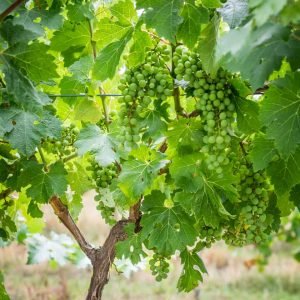
All the gear – steel toes and all
Back to School
Last week the 2017 academic year at Melbourne Polytechnic kicked off in style. Literally – as I went back to school in my new steel toe-capped boots!
Bachelor of Agriculture and Technology
My chosen degree: Viticulture and Winemaking is one of four majors offered under the umbrella of Agriculture and Technology. To gain our degrees we have to take a number of core courses in Agriculture, combined with others from our chosen major.
This semester I have chosen units in:
- Agricultural Systems and Technology
- Winemaking 1
- Wine Chemistry 1
- Wine Marketing
 However, my route through the degree is slightly altered as my PhD has enabled me to apply for credits for many of the first year subjects and key skills. Having said that, there was no doubt that we were all going to be working in the country, when one of first lectures was on identifying native snakes.
However, my route through the degree is slightly altered as my PhD has enabled me to apply for credits for many of the first year subjects and key skills. Having said that, there was no doubt that we were all going to be working in the country, when one of first lectures was on identifying native snakes.
Top three things I have learnt this week:
1. Australian Agriculture

Most of Australia is too dry for agriculture
Agriculture accounted for 2.38% of Australia’s GDP in 2015, according to The World Bank. That many not sound like much, but it is a massive deal to the tens of thousands of farmers in the industry. Australia, despite its massive size, has a relatively low population and produces much more than needed. The export market, therefore, accounts for around 60% of all produced produce. The potential to produce even more is limited in the most part, by the weather and especially rainfall. Most of the Australian land mass is unsuitable for agriculture due to low rainfall and ancient weathered soils.
Cattle is by far Australia’s largest agricultural product, followed by wheat. Viticulture is a small but growing part of this important industry. An average of 1.7 million tonnes of grapes are crushed here a year.
2. Wine Acidity
Acidity in wines does not just determine if the finished product will give you heartburn (though so many less refined wines do.) It is part of a
gentle balance that winemakers try to make between the major flavour components experienced at the palate. Tannin, alcohol and sweetness are the other big players involved.
There are many acids found in viticulture, from the grape to the finished product. Grapes contain tartaric acid, malic acid and a little citric acid. Your finished wine may still contain tartaric acid amongst others, which is often used by the industry to adjust low acid levels. However, finding acetic acid in a volatile wine may indicate that your wine is evolving to wine-vinegar.
Chemicals mentioned here are just a fraction of the large array found in viticulture, where organic chemistry is very important. There are 800 compounds in grapes alone, rising to over 2000 in a glass of the finished product. Many of these chemicals are responsible for the complex array of aromas and flavours in the wine and even how they feel in your mouth. Just a few small changes to the chemical structure of some molecules can completely change the profile of a wine.
3. Two wines, many makers
From a marketing perspective, there are basically two types of wine in Australia; cask wines and premium wines. Though not well marketed or promoted, cask wines represent a surprisingly large share of the market world wide.
The marketing of wine is a very complex subject with many facets depending on how you view your product. The abundance of different types of producer, from large corporations, to family-owned and boutique wineries adds another layer of sophistication as they may all view their product in a slightly different way.
Many makers
In short, the corporations may view their product as more of a commodity; doing whatever they can to turn a profit and using big bucks to promote their wines. On the other hand, small family run businesses or boutique wineries may view their product somewhat more as produce, caring a great deal about and being more highly involved in the detailed production. They tend to rely on cellar door or local restaurant sales for their income.
Over the years, times have been very tough in the wine industry worldwide and now most of the world’s wine is presided over by several big corporations. Medium sized companies have had to sell up or appoint CEOs from bigger companies to stay afloat. In many cases this has been very successful; Veuve Clicquot, Moët & Chandon, Dom Pérignon and Krug are all part of LVMH (Moet Hennessy Louis Vuitton) a luxury goods company from France, for example.
Smaller family companies quite often turn to cooperatives to produce and promote their wines. Though, if their businesses remain small then they are less likely to suffer as hard from the pitfalls of the volatile markets. Indeed, its seems that many smaller boutique producers are simply in it for the lifestyle. In order to achieve this, apparently the secret is to stay small.
My fir st assignment for marketing is a study on the different marketing strategies used within a company for a range of products from cheaper to flagship. I have chosen to use Yalumba for my case study – watch this space.
st assignment for marketing is a study on the different marketing strategies used within a company for a range of products from cheaper to flagship. I have chosen to use Yalumba for my case study – watch this space.
In conclusion
What a fascinating week! Agriculture and marketing are two completely new subjects for me and I can see they will present quite a challenge, though I already scored my first 100% in a quiz. Unlike my previous degrees, I can’t seem to get enough of the reading. Loving being the uber nerd in class. In week two I will get to play with my first grapes, assessing their readiness for crushing, and hopefully find out the dates for my tractor driving course.

